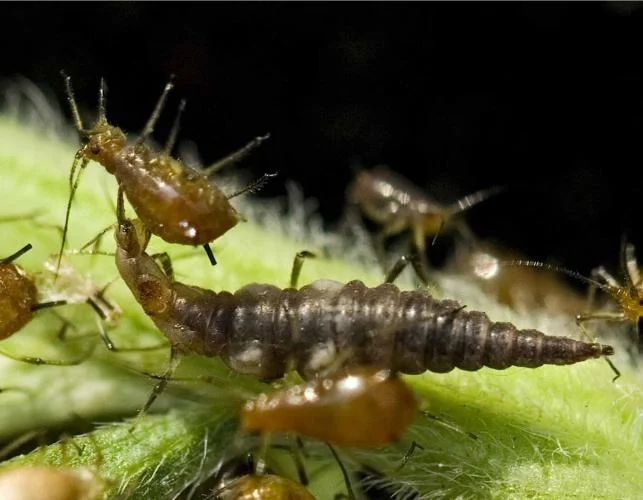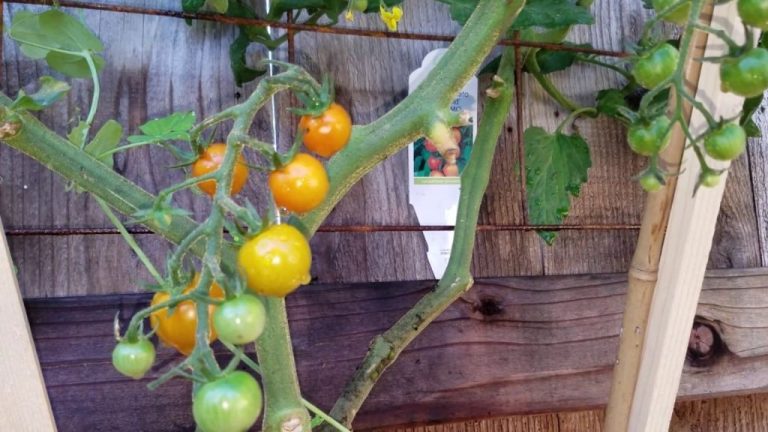The Art Of Organic Crop Rotation: Improving Soil Health And Yield
Introducing Crop Rotation
Crop rotation is the practice of growing different crops sequentially on the same land. It has been used in agriculture for centuries to improve soil health and maintain crop yields. According to the University of Illinois Extension, crop rotation “is the practice of growing different crops in recurring succession on the same land” [1].
The origins of crop rotation can be traced back as early as the Middle Ages in Europe, when farmers recognized that planting the same crops repeatedly led to declining yields. They began alternating crops such as wheat, turnips, barley and clover to allow fields to recover [2]. The routine adoption of crop rotation was a major advancement during the British Agricultural Revolution in the 18th and 19th centuries [3].
The main goals of crop rotation are to control pests and diseases, improve soil health, and maintain or increase crop yields. By growing different crops in succession, farmers can disrupt pest and pathogen life cycles and prevent a buildup of species-specific pests or pathogens. Additionally, varying crops adds diversity in root depth, nutrient needs and uptake, and vegetation cover, promoting soil health and breaking weed cycles [4]. With improved soil nutrition and reduced pest pressure, crop rotation supports higher, more consistent yields over time.
Improving Soil Health
Crop rotation is one of the most effective ways to replenish nutrients in the soil. By rotating crops with different nutrient needs, the soil has time to restore depleted nutrients between plantings. For example, planting nitrogen-fixing crops like beans or peas after nutrient-hungry crops like corn or potatoes allows the soil to rebuild its nitrogen levels (source).

Including cover crops as part of a rotation cycle is also beneficial for soil health. Cover crops like rye, oats, and clover help suppress weeds, reduce soil erosion, and add organic matter back into the soil when they are tilled under. As they decompose, cover crops release nutrients for the following cash crops in the rotation (source).
Rotating crops regularly disrupts pest and disease cycles in the soil. Many soilborne pathogens build up to damaging levels when the same crop is grown repeatedly in the same ground. Switching to a non-host crop in the rotation denies pathogens the host plants they need to survive and multiply. Crop rotation is thus an important tool for reducing the need for pesticides and fungicides (source).
Increasing Yield
Crop rotation plays a key role in increasing yield over time. By rotating different crops through the same field, each plant provides unique benefits to the soil that lead to higher yields for subsequent crops (Future prospects, https://www.researchgate.net/publication/330310907_Future_prospects). Legume crops like faba beans are especially beneficial, as they fix nitrogen in the soil. Research shows faba bean rotations increase the yield and nutrient uptake of the following crop (Uptake (a, b) and yield (c, d) (g/m2) of macro (a, …, https://www.researchgate.net/figure/Uptake-a-b-and-yield-c-d-g-m-of-macro-a-c-and-micro-b-d-nutrients-in-faba_fig2_282867407).
Intercropping, or planting alternating rows of different crops in the same field, can also boost yields. The varied crops help control pests and weeds, use space and resources efficiently, and promote beneficial interactions above and below ground. Careful intercropping design allows farmers to increase total productivity per unit of land.
Planning a Rotation
There are several key factors to consider when planning an effective crop rotation (Crop rotation):
- Crop families – Avoid planting the same families in succession to prevent pest and disease buildup
- Nutrient demands – Rotate nitrogen-fixing crops with nutrient hungry crops
- Soil conditions – Consider soil structure, drainage, and nutrient availability
- Market and profitability – Plan to rotate cash crops with cover crops
- Labor and equipment needs – Balance crops with different timelines and requirements
A basic 3-year rotation may include a root crop, leaf crop, and grain crop annually. A more complex 5-year rotation could be:
- Legume cover crop – clover, vetch
- Solanaceae – tomatoes, peppers, eggplant
- Brassicaceae – broccoli, cabbage, kale
- Cucurbits – cucumbers, melons, squash
- Corn
This rotation moves through five different plant families, incorporates a soil-building cover crop, and balances nutrient demands. The key is planning rotations tailored to your climate, goals, and production capacity.
The Role of Legumes
Legumes play a critical role in organic crop rotations by fixing atmospheric nitrogen in the soil through a symbiotic relationship with rhizobium bacteria. This process converts nitrogen gas into plant-available forms like ammonium and nitrate, providing a natural fertilizer for subsequent crops (Lage). Including legumes like clover, beans, peas, or alfalfa can eliminate the need for synthetic nitrogen fertilizers and improve the nutrition for non-legume plants in the rotation.
Some of the best legumes for crop rotation are red clover, hairy vetch, peas, lentils, soybeans, and alfalfa. These varieties form strong symbiotic relationships with nitrogen-fixing bacteria. Studies show peas supply the most fixed nitrogen, providing over 200 pounds per acre for the following crop (Yu). Beans, peas, and soybeans also produce their own nitrogen while growing. Rotating legumes on a frequent basis ensures a steady replenishment of soil nitrogen over time.
Challenges of Crop Rotation
Crop rotation can present some challenges that need to be addressed. According to one source, “One of the main challenges of crop rotation is the need for careful planning and record keeping. You need to know which crops belong to which families, what each crop’s nutrient needs are, and when you last grew them in each bed” (Crop Rotation: Gardening Explained). Keeping detailed records is key to executing a successful rotation plan.
Another potential difficulty is the time and labor involved in preparing new beds and transitioning crops each season. It takes time and effort to prepare beds for new crops by amending soil, controlling weeds, and more. Farmers must weigh these demands with the long-term benefits of rotation.
There can also be financial considerations if new equipment is needed for specific crops in the rotation sequence. However, studies show the increased yields from rotation typically outweigh these costs over time. One analysis found ” rotation resulted in higher returns to land and management than continuous maize” (Thierfelder et al., Benefits and challenges of crop rotations).
With careful planning and preparation, farmers can overcome these challenges and reap the full benefits of crop rotation for soil health, pest management, and sustainable yields.
Financial Considerations
Implementing a crop rotation plan comes with upfront costs that farmers must account for. These include expenses related to purchasing new equipment, transitioning land, and potential changes in labor requirements [1]. However, studies show the long-term profitability of crop rotation far outweighs the initial costs [2].
Research indicates crop rotation leads to higher yields over time, primarily due to improvements in soil health. Rotating crops replenishes nutrients and breaks pest and disease cycles. Experts estimate yield boosts of 5-15% compared to continuously planting the same crop [3]. Higher yields translate into increased profits in the long run.
There are also potential savings from reducing fertilizer and pesticide inputs over time. With improved soil nutrition and reduced pest pressure, farmers can cut back on external inputs. Additionally, diversifying crops spreads economic risk rather than relying on a single crop’s volatile prices.
The economics of crop rotation require taking a long-term perspective. While transitioning to a rotation plan involves upfront costs, the down-the-road benefits of improved soil health, higher yields, and reduced inputs provide a positive return on investment.
[1] https://agriculture.buzz/insight/understanding-the-economics-of-crop-rotation/
[2] https://cropwatch.unl.edu/2017/crop-sequence-long-term-decision-impacts-annual-profitability-and-risk
[3] https://news.ca.uky.edu/article/crop-rotation-economics-can-be-confusing
Getting Started
When getting started with crop rotation, the first step is assessing your needs by taking stock of your current crops, soil conditions, and yield goals (Obtaining a soil report can provide valuable data). Initial planning involves mapping out a 3-4 year rotation schedule and acquiring any new equipment or infrastructure needed to support multiple crops. Investment in items like additional seed, tools, and storage may be required. Some key planning considerations are crop families, replenishing nutrients, and pest/disease control (Our Inspired Roots, 2022). Help designing a rotational plan can be obtained through your local extension office, other farmers using crop rotation successfully, or agriculture consultants.
Maintaining a Rotation
Once a crop rotation plan has been established, ongoing management and adaptation are needed to maintain its effectiveness. A key part of maintenance is record keeping. Gardeners should track the planting dates, harvest dates, yields, and observations for each crop and variety in the rotation (Fastercapital.com, 2023). This record keeping allows for an analysis of what worked well and what could be improved in future seasons.
Over time, the crop rotation plan will likely need to evolve. Crop priorities may change based on family needs or market prices. The performance of certain varieties in the local soil and climate should also be evaluated. Diseases, pests, or nutrient deficiencies may emerge that affect the viability of some crops in the rotation sequence (Fastercapital, 2023). Being flexible and making small adjustments to the plan from season to season can help maintain diversity and soil health over the long-term. Consistent monitoring of soil conditions through testing is recommended.
With careful maintenance of records, observation, and adaptability, a thoughtfully designed crop rotation plan can benefit garden soil and plant health for many years. Periodic additions of organic matter through cover crops and compost will also support the continued success of the rotation.
The Future of Crop Rotation
As we move into the future, organic farmers are innovating new methods and techniques for crop rotation. With the rise of precision agriculture, farmers can utilize GPS, soil sampling, and data analysis to plan optimized rotations to improve yields and soil health (Crop Rotation: The Definitive Guide). New technologies like multispectral imaging and NDVI analysis allow farmers to assess crop health and soil variability within fields to fine-tune rotations (Crop rotation: Boosting Yield Variance with Smart Crop Rotation Practices).
In addition, experienced organic farmers are taking leadership roles in teaching crop rotation principles and best practices to the next generation of farmers. Farmer training programs, agricultural extension services, conferences, and online resources help spread knowledge on successful rotations for localized conditions and crops. Mentoring networks within farming communities also enable new farmers to learn region-specific rotational strategies from their more experienced peers.
Looking ahead, partnerships between farmers, agricultural researchers, and policy makers will be key to overcoming barriers and continuing innovation in crop rotation. With increasing support for sustainable farming, the future looks bright for improved crop rotations that enhance productivity while restoring our soils and ecosystems.





